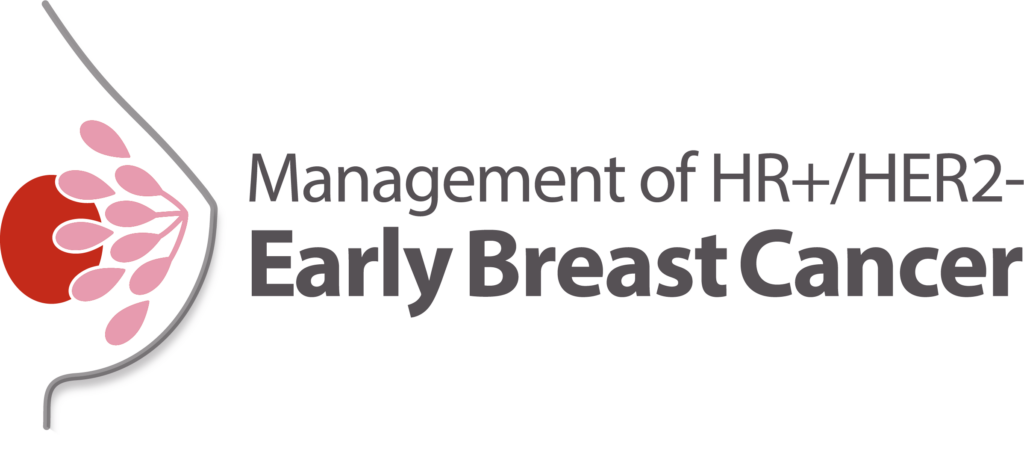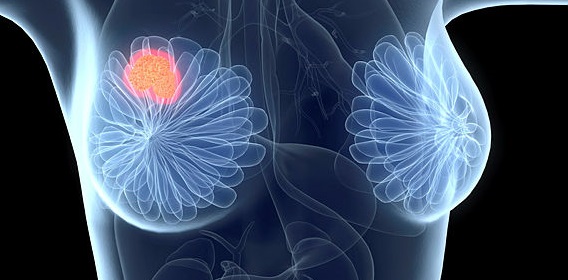medwireNews: Two subgroup analyses from the monarchE study confirm the benefit of supplementing adjuvant endocrine therapy (ET) with the CDK4/6 inhibitor abemaciclib in people with hormone receptor-positive, HER2-negative early breast cancer at high risk for recurrence.
The findings were presented at the ESMO Breast Cancer Congress 2022 in Berlin, Germany, with the first analysis focusing on patients who were at high risk on the basis of clinicopathologic features, while the second evaluated outcomes by menopausal status.
Abemaciclib benefit confirmed for clinicopathologic high-risk patients
Mattea Reinisch (Kliniken Essen-Mitte, Germany), who presented the first analysis, explained that cohort 1 of the phase 3 trial included 5120 patients who had high-risk clinicopathologic characteristics, defined as either four or more positive axillary lymph nodes or one to three positive nodes plus grade 3 disease and/or a tumor size of 5 cm or greater.
At a median follow-up of 28 months, the risk for an invasive disease event was reduced by a significant 32% among the 2555 participants who were randomly assigned to receive abemaciclib 150 mg twice a day for up to 2 years alongside ET relative to their 2565 counterparts who received ET alone.
The 2-year invasive disease-free survival (IDFS) rate was 92.6% in the abemaciclib arm and 89.6% in the control arm, equating to an absolute difference of 3.0 percentage points. The corresponding rates at 3 years were 88.6% and 82.9%, and the difference was 5.7 percentage points.
Abemaciclib addition was also associated with a significant 33% reduction in the risk for distant relapse events versus ET alone. The distant relapse-free survival (DRFS) rates at 2 and 3 years were 94.1% versus 91.2% and 90.2% versus 85.7%, respectively, giving absolute between-group differences of 2.9 and 4.5 percentage points.
Reinisch highlighted that the IDFS and DRFS benefit offered by abemaciclib was consistent “across all subgroups of patients and disease characteristics.”
Noting that cohort 1 comprises 91% of the total study population, the presenter pointed out that the previously reported benefit of abemaciclib in the intention-to-treat population appears to be predominately driven by this cohort.
And she concluded that “these data represent the first and major advance in the treatment of early breast cancer subtype in almost 2 decades,” and have led to the approval of abemaciclib for this indication in the EU and Japan.
Abemaciclib addition reduces relapse risk regardless of menopausal status
The second monarchE analysis was reported in a poster by Nadia Harbeck (LMU University Hospital Munich, Germany) and colleagues. It involved the full intention-to-treat population and aimed to determine whether potential differences in tumor biology between pre- and postmenopausal patients might affect their response to treatment.
Of the 2808 patients who were assigned to the abemaciclib plus ET arm, 1227 were premenopausal at study intake, while 1576 were postmenopausal and five did not report menopausal status. The ET alone arm comprised 2829 participants, 1224 of whom were premenopausal and the remaining 1605 were postmenopausal. Male participants were considered postmenopausal.
The analysis was conducted at a median follow-up of 27 months, during which time “[t]reatment benefit was consistent in both [the] premenopausal and postmenopausal subgroups,” albeit with “a numerically greater relative risk reduction” in the former subgroup, said the authors.
Specifically, in premenopausal patients, the 2-year IDFS rates in the abemaciclib and control groups were 94.5% and 90.4%, respectively, equating to a significant 42% decrease in the risk for an invasive event with the CDK4/6 inhibitor, while the respective 3-year rates were 89.5% and 83.8%.
Among postmenopausal patients, those given abemaciclib alongside ET had a significant 21% lower risk for an invasive event than their counterparts given ET alone. The 2-year IDFS rates were 91.2% and 89.7%, respectively, while the 3-year rates were 88.2% and 83.1%.
The findings were similar for DRFS, such that abemaciclib addition was associated with a significant risk reduction of 40% among premenopausal patients and 25% among postmenopausal patients.
medwireNews is an independent medical news service provided by Springer Healthcare Ltd. © 2022 Springer Healthcare Ltd, part of the Springer Nature Group
ESMO Breast Cancer Congress 2022; Berlin, Germany: 3–5 May
Author: Shreeya Nanda

